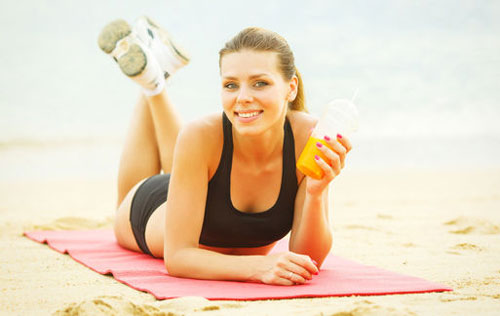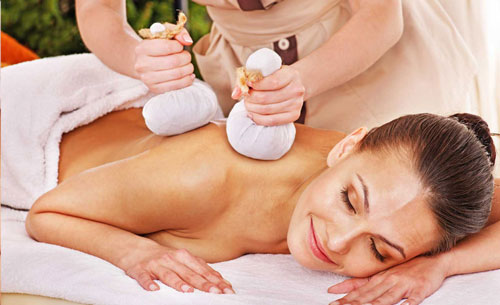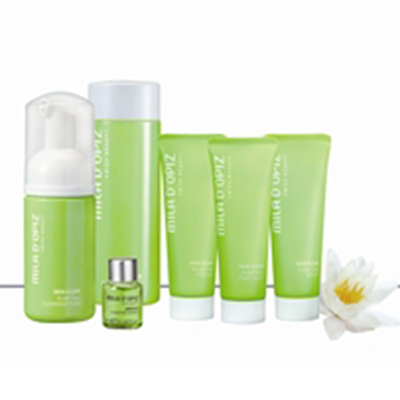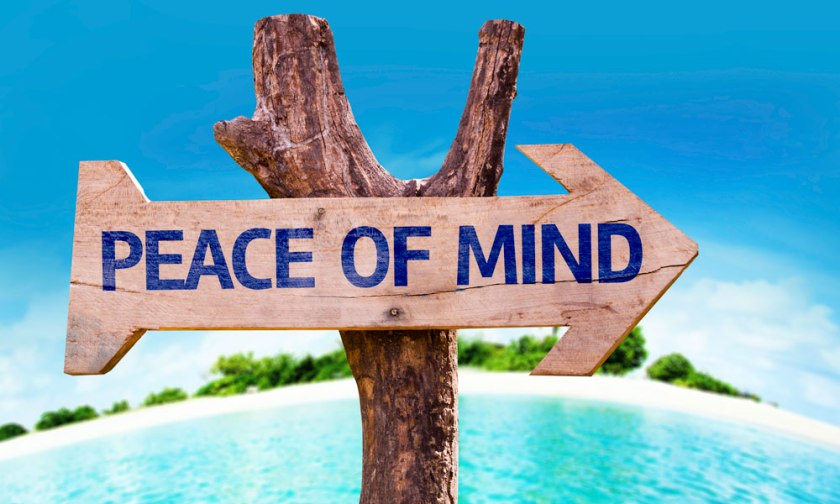For more than a year we have all been getting to grips with the importance of gut health for overall wellness, great skin and a youthful-looking, radiant appearance.
Now we desperately need to move on to include what our industry can contribute to addressing health of mind (which also, it must be said, has a profound affect on the gut, and vice versa).
As well as the psychological and emotional torment caused by depression, anxiety and other mental health disorders, these can ultimately manifest in physical discomfort and disease.
It almost sounds trivial to say all this ultimately impacts on the appearance – but that is, after all, the grass roots of our industry.
The pursuit of improved mental health is where our industry is heading now.
As a business owner/manager, therapist or other team member, you are in a unique position to change someone’s life.
In such up-close-and-personal circumstances as you provide with your rapport, treatments and the overall environment of the premises, you will likely hear things that no one else in your clients’ lives will; not partners, family, friends – even health professionals. With a trusted therapist they feel safe, nurtured and cared for.
If a client is depressed, anxious, or otherwise troubled, the treatments you provide, and listening as they “let of steam” will go a way towards lifting their spirits, but of course that doesn’t provide a solution.
However, the more you know about avenues they can explore in pursuit of better mental health, the more trusted you will become and the more valuable your service will be.
And you, too, can explore ways to adapt your current offering – no matter your business model or location – to become a part of this push. We look at the trends:
MIND WHERE YOU’RE HEADED

The key theme of the annual Global Wellness Summit, this year being held in Palm Beach, Florida, October 9-11, is: The Future Is Mental Wellness.
GWS (hosted by the Global Wellness Institute – GWI) is an invitation-only international gathering that brings together leaders and visionaries to positively shape the future of the $3.7 trillion global wellness economy.
At last year’s 10th anniversary summit in Kitzbühel, Austria, the aesthetic and wellness industries’ contribution to promoting mental health was singled out as one of 10 key trends for 2017 and beyond.
“When it comes to mental wellness, our world has a problem: depression and anxiety is skyrocketing, and by 2030, the former will be the #1 health issue, outranking obesity (World Health Organisation),” according to a recap of the summit.
“So look for dramatically more `healthy mind’ approaches in coming years. Wellness retreats and spas are adding neuroscientists and psychotherapists (like London’s ESPA Life at Corinthia Hotel).
“Meditation is not only radically mainstreaming (even on-demand in hotel rooms), but spawning creative new breeds (from `dream’ to `floating’ meditation).
“We’ll see everything from new part-mind/part-body workout brands to apps that track your mental state (think MindBit, not FitBit). Because `mind’ will finally get equal billing with `body’.”
HEALTHFUL HOLIDAYS

Taking a destination holiday has been an age-old panacea for recovering one’s equilibrium; to rest and recover – even if the itinerary is packed with travel and sightseeing, the excitement and escape from routine pressures is what is so therapeutic.
But 21st century holidaymakers are increasingly combining their destination tourism holidays with experiences for enhanced health and wellness. Double whammy.
According to the GWI, the worldwide wellness tourism industry was worth US $562 billion in 2015 and is growing apace.
In Australia alone, it is estimated to generate 4.6 million trips and directly employs 55,650 people with a $5.3 billion expenditure, ranking Australia 16th in the top 20 wellness tourism markets worldwide, according to GWI statistics.
SpaDreams, a leading European specialist in health and wellness holidays, has identified from analysis of data from the largest health tourism database in Europe a significant increase in demand for specific healthy holiday offers:
- Holidays for detox, weight loss and fasting. Bespoke nutritional programs make a holiday a wholesome experience.
- Relaxation at luxury resorts. Holidaymakers have discovered that comfort and pleasant ambience enhance therapeutic effects.
- Yoga holidays. Escaping the everyday grind and rediscovering inner balance has become a goal for many travellers. Many facilities offer relaxation and meditation for both beginners and advanced yoga enthusiasts. Thanks to the change of environment, the motivation is also often stronger away than at home.
Ultimately, prevention is the best medicine. Claudia Wagner, managing director of SpaDreams says: “More and more people are recognising that on holiday you can treat yourself to something more than just lying on the beach.
“Quality health programs promote wellbeing and a radiant appearance. A health holiday gives an energy boost people can feel long after they’ve returned home.”
From cosy hotels to large health centres, visionary providers have long recognised the ever-growing target group of health tourists, offering nutrition programs, yoga specialists, therapists and holistic treatments in addition to traditional spa offers.
PREVENT, THEN NO NEED TO CURE

“Prevention lies at the heart of spa. Our ethos is to support people in developing habits that ensure they remain in the best health possible, according to Liz Terry, editor of Spa Business magazine.
“Yet to date, mental health has been largely left out of the equation. The opportunity is there to bring it alongside and to become truly holistic.
“The World Health Organisation estimates that more than 25 percent of people around the world will suffer from some kind of mental health crisis or challenge in their lifetime, with more women than men affected.
“As the spa industry seeks to grow both its reach and scope, the development of services relating to mental health – from both a preventative and a curative point of view – is an opportunity both to be useful and to broaden services.
“The spa industry has borrowed from a wide range of disciplines on its journey so far – ancient healing traditions (such as Ayurvedic therapies, including massage, pictured above), the beauty market, the fitness industry, the wellness sector and many areas of specialism within allopathic, alternative and complementary medicine.
“This rich mix is one of the things that gives the industry its vibrancy. We are a melting pot of skills and cultures and this leaves us well placed to extend our reach into the sphere of mental health, so long as we’re mindful of the challenges and of our limitations.
“Prevention is the area we can move on most immediately: helping people to develop strategies and lifestyle habits that enable them to maintain good mental health is already within the remit of many spas.
“We must be kind, frank and straightforward in how we present these services, so people learn that their mental health is as deserving of attention as all other parts of their wellbeing.
“We can be part of the solution when it comes to the shame and fear which many feel when confronting these challenges, especially those who find it difficult to seek help.
“As we add wellness into the business mix, the opportunities to deepen this work will increase and developing mental health services for people already suffering from challenges will take things to another level. This is still within the remit of medical spas and there can be few places more able to create healing environments.
“Mental health needs as much attention as other parts of our wellbeing.”
DISCONNECT TO RECONNECT

Searching websites, texting, checking emails and uploading to social media sites has become, in some ways, an essential preoccupation to keep connected socially and ahead of the game professionally.
But the downside is that it can easily infiltrate every part of a person’s life to a debilitating degree. In essence, it becomes addictive behaviour, hard-wired into the psyche, and as difficult to tackle as perhaps alcoholism, gambling and compulsive eating.
At a GWI Round Table in New York in 2015, one of the key topics of discussion was How Technology – Enabling 24/7 Work – Is Killing Us.
“Technology has spawned new, global work realities: imprisonment by screens, and a powerful erosion of the line between now always-on `work’ and `life’,” a GWI paper recapped after the event.
“Assembled experts agreed that we have not yet begun to grasp the wide-ranging impact on employees’ physical and mental health – and productivity,” said the GWI paper.
A Round Table participant, Shawn LaVana, head of marketing for Virgin Pulse, said: “We’re checking our smartphones 150 times a day. How focused can we really be? All of this time in front of screens, for work and in our personal lives, means we’re not exercising and eating well. These are negative habits we’ve built, but we can build positive habits in the same way.”
Fellow participant James Brewer, workspace consultant for Steelcase, added: “The disintegration of work-life boundaries is also being driven by globalisation. 24/7 connectivity is making the divide between work and life a blur, where people are constantly `on’. When you have teams distributed worldwide, you have new realities like workers having to virtually collaborate with colleagues and business partners in the middle of the night.”
But things are steadily moving in the right direction. For instance, in January a new French law establishing workers’ “right to disconnect” went into effect. The law requires companies with more than 50 employees to establish hours when staff should not send or answer emails. Other countries such as Britain are following suit.
The goals of the French law include making sure employees are fairly paid for work, and preventing burnout by protecting private time.
“Digital detox” initiatives are being embraced by medical, wellness and aesthetics practitioners around the world, as technology tightens its vice-like grip on the physical and emotional wellbeing of its “addicts”.
This in turn, unsurprisingly, has given rise to “Tech-Free Tourism.”
Take the Digital Detox initiative that was launched by the luxury Mandarin Oriental hotel chain at all its spas worldwide last September.
The program is designed to help guests find new ways to manage their relationship with technology and the stress that can come with a constantly connected digital lifestyle.
“Technology has brought us many great advances,” said Jeremy McCarthy, Group Director of Spa and Wellness, “but the expectations for instant communication and the increasing pace of change in the world can have a negative impact on our wellbeing.”
The hotel chain has worked with the renowned Mayo Clinic in the US on the creation of a range of tips and guidelines that can help establish personal boundaries on the use of technology, clear mental chatter and establish a healthy, digitally balanced lifestyle.
The Digital Detox initiative encourages guests to surrender their phones on arrival at the spa, thus removing any online distractions.
In the spa relaxation rooms, guests can access a full range of mindfulness activities such as writing in a journal, note card writing, colouring, meditation or simply relaxing and enjoying the silence.
Thailand might be known as a backpacker magnet, but sleepy seaside Hua Hin is the ultimate escape for frazzled executives.
The legendary Chiva-Som Wellness Retreat, which opened 22 years ago this year, has been a pioneer in personalised wellness programs to balance and rejuvenate the mind, body and spirit. It has continually evolved its menu (literally and figuratively) to accommodate the prevailing pressures and stressors guests have come to seek relief from.
So serious is Chiva-Som about minimising the stress sparked by frantic email checking and web surfing that guests who use their mobile phones etc outside their private rooms are promptly instructed to leave.
Indeed, many destination spas require guests to either surrender their electronic comms devices when they check in, or limit their use to certain areas and times.
Australia’s multi award-winning Gwinganna Lifestyle Retreat, located in the scenic Tallebudgera Valley hinterland of the Gold Coast on more than 200 hectares, offers programs from two to seven days or longer, specialty spa treatments, delicious organic cuisine and extensive facilities including the Spa Sanctuary, the largest in the Southern Hemisphere.
Overall there is a heavy focus on “disconnecting” guests from the frenzy of the lives they are “leaving behind” for even a few days to gain respite and regain perspective.
“Guests will often arrive looking incredibly tense, and can become alarmed or frustrated as they’re checking in if they can’t get mobile reception to make last minute calls or check emails,” says marketing manager Tracy Willis.
“But after only a day, they just seem to totally let that frantic mindset go. While some engage in the full range of activities/treatments on offer, others will just disappear for hours on end in our beautiful surrounds. We mightn’t see them from breakfast till dinner!”
Gwinganna has worked hard to add ever-more varied activities and therapies aimed at promoting mental as well as physical wellness, such as Equine Therapy, which has gained huge traction.
HOT STUFF

Newly published health and biomedical sciences research suggests hot springs bathing provides significant benefits for mental health and musculoskeletal pain and so warrants consideration from health practitioners and insurers as a complementary therapy similar to yoga and massage.
The research, conducted by researchers at RMIT University, Melbourne, and published in the Asia Pacific Journal of Tourism Research, involved an online survey that attracted 4265 responses from bathers at Australia’s largest commercial hot springs, Peninsula Hot Springs (pictured above), on Victoria’s Mornington Peninsula.
While analysis revealed that relaxation, peace and tranquility, indulgence and escape were the most important motivators for hot springs bathing, significant benefits were reported from those who said they suffered from back pain, arthritis, stress, anxiety, depression and insomnia.
“The research provides us with evidence to support what we have been seeing for many years,” says Brook Ramage, Peninsula Hot Springs general manager and founder of the Golden Door retreats.
“What we can say from the study is that bathing in the geothermal mineral water puts your body in the best possible place to heal itself.”
Around 40 percent of respondents with severe back pain, arthritis, injury, chronic pain, stress and anxiety reported their relief as ‘”significant” (lasting more than two days and/or reducing reliance on other treatments after bathing).
The majority of bathers (82 percent) reported sleeping better after bathing, with 62 percent of those who reported much better sleep stating that the effect lasted for two days or longer.
Research supervisor Professor Marc Cohen of RMIT said: “The finding that 98 percent of respondents reported general health benefits and 82 percent reported improved sleep after bathing suggests that most bathers believe hot spring bathing improves health and wellbeing, and provides more than just entertainment or indulgence.”
“Balneotherapy” is the treatment of medical conditions by bathing in mineral springs, which is very much part of routine medical care in Europe and Japan.
Susie Ellis, chairman and CEO of the Global Wellness Institute, a non-pro t organisation with a mission to empower wellness worldwide by educating public and private sectors about preventative health and wellness added: “The RMIT University study shines light on the $50 billion thermal/mineral springs industry; a key component of the $563 billion wellness tourism industry.
“The research gives concrete evidence around the wellness benefits beyond relaxation and indulgence that hot springs deliver, including a better night’s sleep as well as relief from back pain, arthritis and stress. This research should prove invaluable for the promotion of the health and wellness benefits of hot springs bathing.”




